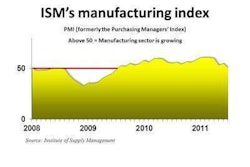
(For a downloadable PDF of the United States vs. Caterpillar complaint, click here.)
Cat allegedly shipped more than 590,000 highway and non-road diesel engines without correct emissions controls, according to EPA. Caterpillar also allegedly failed to comply with emission control reporting and engine-labeling requirements.
The settlement requires Cat to recall the known defective engines, install the correct ATDs — devices that control engine exhaust emissions once the emissions have exited the engine and entered the exhaust system — and reprogram the fuel injector and fuel map settings. The recall will continue until all engines with incorrect catalysts, fuel injectors or fuel map settlings have been addressed or until Dec. 31, 2011, whichever is earlier, according to the EPA.
In addition to the recall, Caterpillar will mitigate excess emissions through permanent retirement of banked emission credits, according to the settlement. Within 30 days of entry of the Consent Decree, Caterpillar agrees to retire credits equivalent to the lifetime excess emissions from the 925 engines that did not receive the correct ATD or that were programmed with incorrect fuel injector or fuel map settings.
The credits will come from Caterpillar’s highway averaging, banking and trading (AB&T) account with EPA; off-road AB&T account; and purchase of credits on the open market through a licensed broker.
This permanent retirement of banked emission credits is equivalent to the following:
- 17.6 tons (16.0 megagrams) of nitrogen oxides (NOx) and non-methane hydrocarbons (NMHC)
- 0.97 ton (.88 megagram) of particulate matter (PM).
Bridget M. Young, a media relations representative from Cat’s corporate affairs department, said Caterpillar fully cooperated with the U.S. Environmental Protection Agency (EPA), California Air Resources Board and Department of Justice.
“As the decree indicates, Caterpillar denies any wrongdoing, but does agree that the decree represents a good faith effort between the parties to resolve their differences and avoid potentially lengthy litigation,” Young says. “Caterpillar is committed to following the terms of the decree.”











